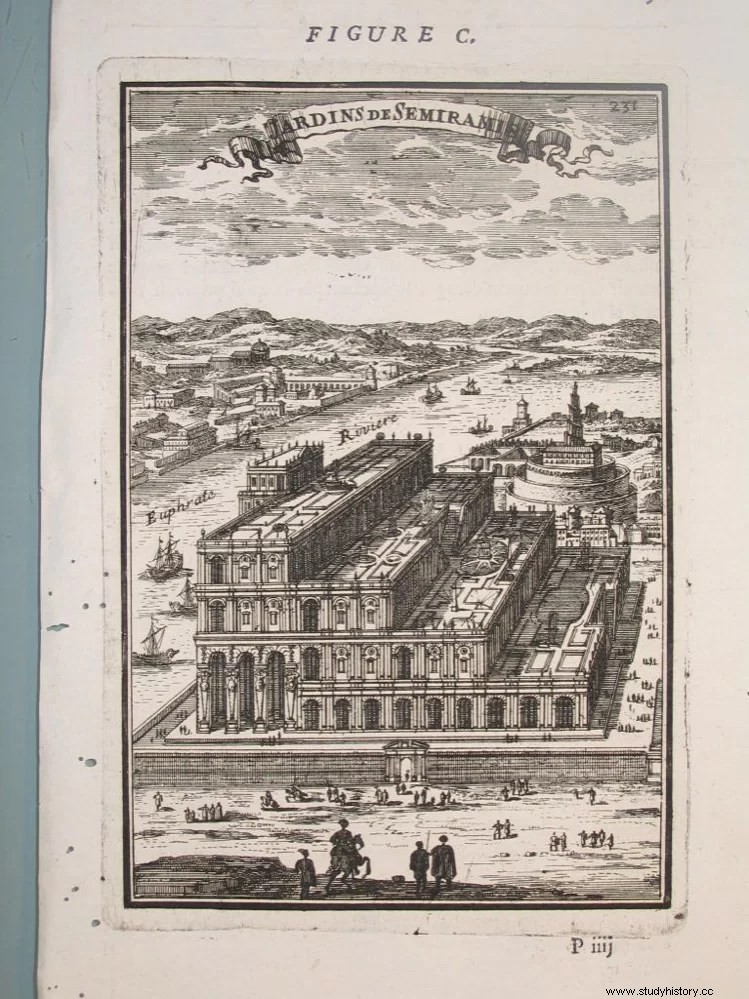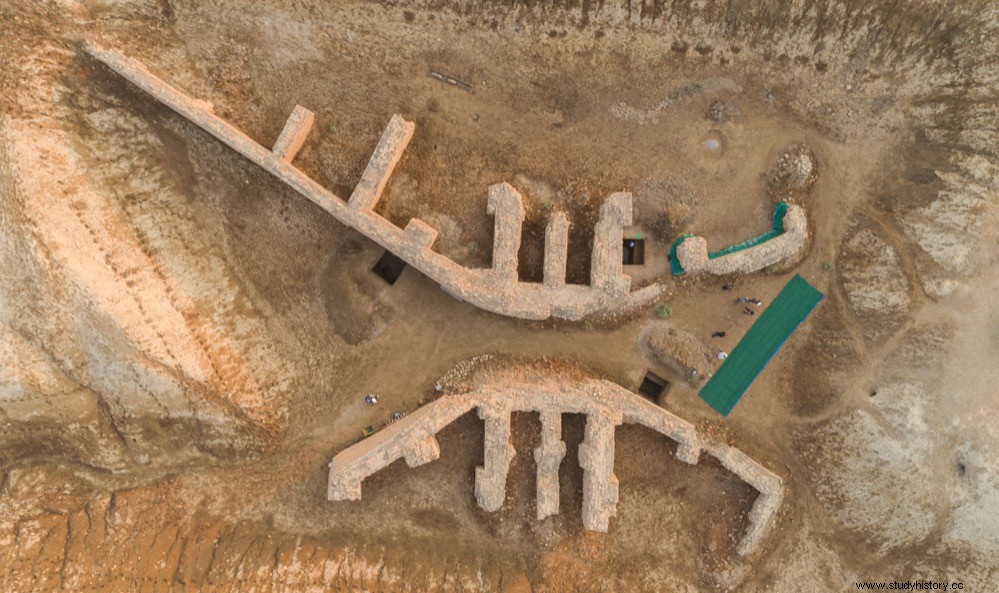The Greek historian of the 1st century B.C. Diodorus of Sicily collects in his Bibliotheca historica a surprising fact:the construction in Babylon of an underground passage under the Euphrates river, an engineering prodigy that would not be repeated until the 19th century. Diodorus says:

The Semiramis referred to by Diodorus, probably following Ctesias of Cnidus, was a legendary queen of Assyria. Other ancient authors such as Plutarch, Eusebius, Polyenus and Justin also mention it, and attribute the construction of various structures throughout Asia to it. Herodotus considers her the author of the artificial banks of the Euphrates. And in general, many monuments in the Near and Middle East, whose origin was forgotten or unknown, were attributed to her.
Some scholars identify her with Shammuramat, the Assyrian wife of King Shamshi-Adad V, who ruled the Neo-Assyrian empire between 824 and 811 BC. In any case, the sources deduce that the tunnel to which they refer must have been much older, built around 2180 and 2160 BC, therefore attributed to the legendary Semiramis and not to the historical one.
The tunnel would have been 929 meters long, 4.5 meters high and 7.5 meters wide, connecting the main temple of Babylon with the royal palace below the riverbed. According to Diodorus, its construction lasted 260 days, and for this a temporary dam was built that retained the water until the structure was ready. To prevent the liquid from leaking out, all the interior masonry was waterproofed with bitumen or tar (the entire area is rich in oil, known since ancient times).

Lucius Flavius Philostratus, in his work from the year 250 AD. Life of Apollonius of Tyana , also recounts the construction of the underground passageway:
But did such a marvel of engineering really exist? Diodorus says so, as we have seen, but Herodotus speaks of a bridge and not of an underground tunnel.
However, being an underground tunnel something so unusual at the time that there was surely no specific word, it does not seem strange to refer to it as a bridge Just like Herodotus does. In any case, if there was a tunnel under the Euphrates in Babylon, ancient sources indicate that it was already in disuse or had collapsed by the time the Persians arrived in 539 BC.

Did the Babylonians have adequate technology to carry out such a work? We do not know. We have evidence of some tunnels excavated in Antiquity, although certainly several centuries later, and which constitute great engineering achievements of their time. Two of them, which still exist, we talked about here earlier. They are the Hezekiah Tunnel (701 BC) and the Eupalino Underground Aqueduct (between 538 and 522 BC).
And in the summary city of Ngirsu, a few kilometers south of Babylon, what is believed to be the oldest bridge in the world was discovered, built at the same time attributed to the Euphrates tunnel, some 4,000 years ago.
Be that as it may, no other underwater passage was built until almost four millennia later, when in 1824 Marc Isambard Brunel designed and built the tunnel under the River Thames in London, with a length of 396 meters.
